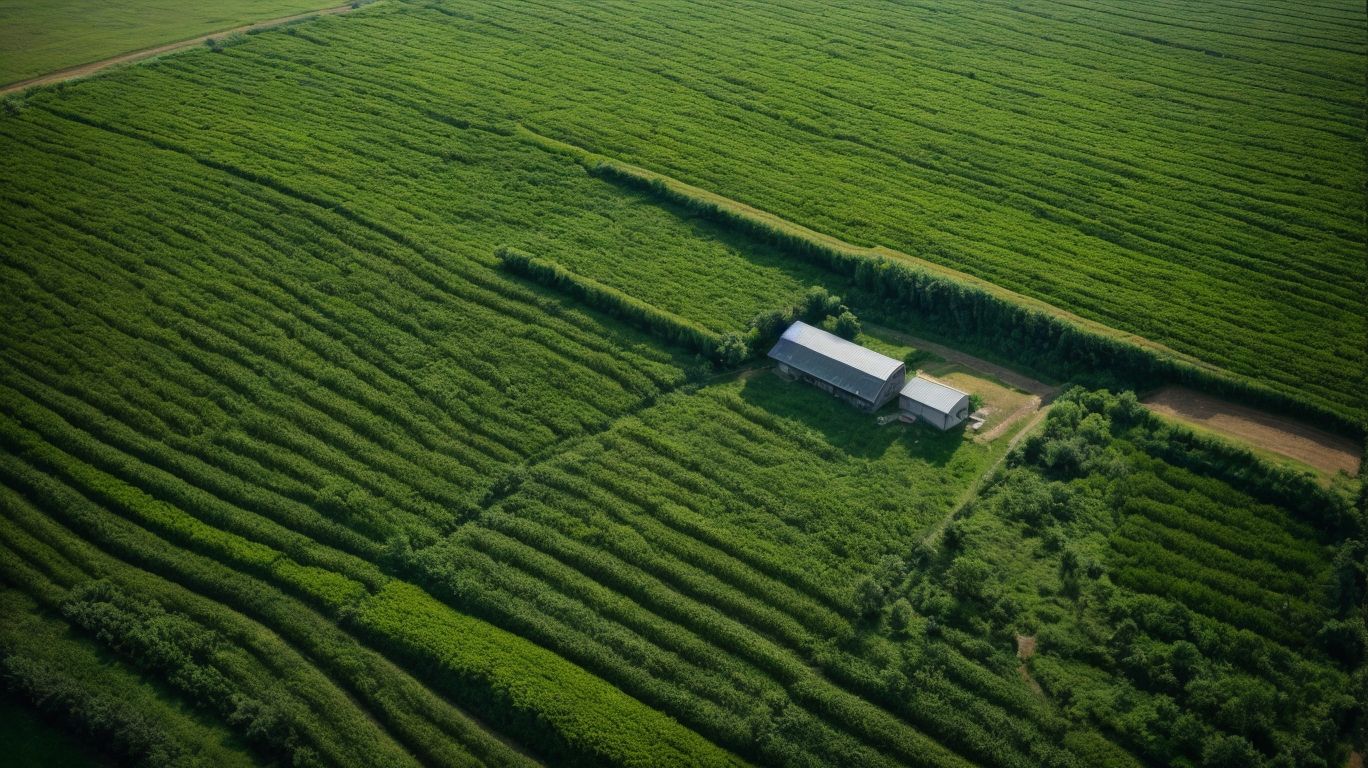Urea, also known as carbamide, is a chemical compound widely used as a fertilizer in the agricultural sector. It is an essential source of nitrogen for plants and helps increase crop yields. However, the production and use of urea have significant environmental impacts that often go unnoticed. In this article, we will explore the hidden consequences of urea and possible solutions to reduce its environmental impact.
Urea is produced through a chemical reaction between ammonia and carbon dioxide. It is mainly manufactured using natural gas, which releases greenhouse gases such as carbon dioxide and methane into the atmosphere. The production process also requires a vast amount of energy, contributing to air pollution and the depletion of natural resources.
Urea is used as a fertilizer to provide essential nutrients such as nitrogen to crops. However, when it is applied in excessive amounts, it can have detrimental effects on the environment.
Some of the environmental impacts of urea include:
- Air Pollution: The production and application of urea release ammonia, nitrogen oxides, and other harmful gases into the air, contributing to air pollution and smog.
- Water Pollution: Excessive use of urea can lead to leaching of nitrates into water bodies, contaminating groundwater and causing eutrophication.
- Soil Degradation: Overuse of urea can alter the soil’s pH levels, leading to soil acidification and depletion of essential nutrients.
- Contribution to Climate Change: Urea is a significant source of greenhouse gas emissions, contributing to climate change and its adverse effects on the environment.
To reduce the environmental impact of urea, there are several solutions that can be implemented:
- Implementing Sustainable Farming Practices: Practices such as crop rotation, using cover crops, and precision application of fertilizers can reduce the need for excessive use of urea.
- Using Alternative Fertilizers: Utilizing organic fertilizers, such as compost and manure, can provide nutrients to the soil without causing harm to the environment.
- Proper Disposal of Urea Waste: Farmers must dispose of unused or expired urea properly to prevent contamination of soil and water sources.
- Government Regulations and Policies: Governments can implement regulations and policies to monitor and control urea production and usage to reduce its environmental impact.
In the long term, finding alternative solutions to urea may be necessary. Some possible solutions to replace urea include:
- Organic Fertilizers: As mentioned earlier, organic fertilizers can provide essential nutrients to the soil without causing harm to the environment.
- Biofertilizers: Biofertilizers, such as Rhizobium and Azotobacter bacteria, can convert atmospheric nitrogen into a usable form for plants, reducing the need for synthetic fertilizers.
- Precision Farming Techniques: Utilizing precision farming techniques such as soil testing and variable rate application of fertilizers can reduce the overall use of urea.
- Innovative Technologies: Researchers are exploring innovative technologies such as nanotechnology to develop more efficient and environmentally friendly fertilizers.
In conclusion, the production and use of urea have significant environmental impacts, but there are solutions that can help reduce its negative effects on the environment. With proper measures and technological advancements, we can strive towards a more sustainable and eco-friendly agricultural sector.
Key Takeaways:
What Is Urea?
What Is Urea?
Urea is a naturally occurring compound found in the urine and other bodily fluids of mammals. It is also artificially produced for various commercial purposes. This substance serves as a crucial source of nitrogen in fertilizers, aiding in plant growth. In skincare, urea is utilized for its hydrating properties and in certain medical tests to evaluate kidney function. Additionally, urea helps to decrease harmful nitrogen oxide emissions from diesel engines.
How Is Urea Produced?
- Synthesis: Urea is produced through a chemical reaction between ammonia and carbon dioxide in a process called the Bosch-Meiser synthesis.
- Ammonia Production: Ammonia is synthesized using the Haber-Bosch process, combining nitrogen and hydrogen under high pressure and temperature.
- Carbon Dioxide Utilization: Carbon dioxide, often a byproduct of industrial processes, is reacted with ammonia to form urea.
- Purification: The resulting urea solution is concentrated and purified to obtain solid urea in the form of prills or granules.
What Is Urea Used For?
Urea, a compound produced in the liver, plays a vital role in removing waste products from the body. It has a wide range of applications, including use as a nitrogen-release fertilizer in agriculture to promote plant growth. Urea is also commonly used in skincare products for its moisturizing properties.
Pro-tip: If using products containing urea, be sure to moisturize adequately to prevent potential dryness.
What Are The Environmental Impacts Of Urea?

Photo Credits: Chemicalglossary.Net by Daniel Harris
When it comes to fertilizers, urea is one of the most commonly used and widely available options. However, there is a hidden cost to its widespread use: the environmental impact. In this section, we will delve into the various ways that urea can harm our environment. From air and water pollution to soil degradation and its contribution to climate change, we will uncover the true consequences of using urea as a fertilizer. It is important to understand these impacts in order to make informed decisions about our agricultural practices and their effects on the planet.
1. Air Pollution
- Implementing air pollution control technologies in urea production plants.
- Utilizing low-emission or zero-emission production processes.
- Regular monitoring of air quality near urea production facilities.
- Replacing inefficient equipment with energy-efficient alternatives to reduce air pollution.
To effectively combat the issue of air pollution, it is essential to implement strict regulations and invest in sustainable technologies for urea production.
2. Water Pollution
- Implementing best management practices can effectively reduce runoff from farms and industrial sites, ultimately decreasing the amount of urea that reaches water bodies and contributes to water pollution.
- Precision agriculture techniques, such as precise application of urea, can help minimize excess fertilizer and potential leaching into water sources.
- Controlled-release fertilizers, like polymer-coated urea, can be promoted to reduce nitrogen leaching and minimize water pollution.
- Investing in research for developing eco-friendly urease inhibitors can prevent urea hydrolysis and subsequent nitrate leaching into water systems, helping to combat water pollution.
3. Soil Degradation
- To combat soil degradation, implementing crop rotation is crucial for maintaining soil fertility and structure.
- Cover crops can also be utilized to protect the soil from erosion and improve the organic matter content.
- Reduced tillage techniques are another effective method for minimizing soil disturbance and erosion.
- To enhance soil structure and nutrient content, it is recommended to apply compost and organic matter.
4. Contribution To Climate Change
The production process of urea is a contributor to climate change due to the generation of greenhouse gases. The Haber-Bosch method, responsible for the majority of urea production, consumes a significant amount of energy and emits CO2. Additionally, the application of urea releases nitrous oxide, a potent greenhouse gas that further contributes to climate change.
Fact: Approximately 1% of global energy consumption is attributed to the production of urea.
How Can We Reduce The Environmental Impact Of Urea?

Photo Credits: Chemicalglossary.Net by Ralph Brown
The use of urea in agriculture has greatly increased crop yields, but at what cost to the environment? In this section, we will explore various ways to reduce the environmental impact of urea. From implementing sustainable farming practices to using alternative fertilizers, we will discuss how farmers and individuals can make a positive change. Additionally, we will touch on the importance of proper disposal of urea waste and how government regulations and policies can also play a role in mitigating the hidden consequences of this commonly used fertilizer.
1. Implementing Sustainable Farming Practices
- Implement sustainable farming practices such as crop rotation to maintain soil fertility and decrease the need for urea.
- Adopt cover cropping to prevent soil erosion and improve soil structure, reducing the use of urea.
- Utilize organic manure and compost to naturally enhance soil fertility and reduce the dependence on urea.
- Implement integrated pest management to minimize the use of urea-based pesticides.
2. Using Alternative Fertilizers
- Transition to organic fertilizers such as compost, manure, or bone meal to minimize environmental impact.
- Implement crop rotation and cover crops to enhance soil fertility and reduce the need for synthetic fertilizers.
- Explore biofertilizers like Rhizobium or mycorrhizal fungi, promoting sustainable agricultural practices.
3. Proper Disposal Of Urea Waste
- Collect and store any unused urea in airtight containers to prevent it from leaching into the environment.
- Dispose of urea waste at designated facilities or follow local regulations for safe disposal.
- Avoid spilling or dumping urea on the ground or into water bodies to prevent pollution.
- Implement proper handling and disposal procedures, as outlined in the Proper Disposal of Urea Waste guidelines, to minimize environmental impact.
4. Government Regulations And Policies
Government regulations and policies are essential in mitigating the environmental impact of urea. By enforcing strict guidelines on the production, usage, and disposal of urea, governments can greatly reduce pollution of the air, water, and soil. Furthermore, governments can also encourage and incentivize the adoption of sustainable farming practices through subsidies and support programs, further minimizing the negative effects of urea on the environment. The Hidden Consequences: Exploring the Environmental Impact of Urea
Fact: The regulation of urea usage in agriculture varies widely across different countries, resulting in diverse environmental impacts globally.
What Are The Possible Solutions To Replace Urea?

Photo Credits: Chemicalglossary.Net by Christian Mitchell
As the negative effects of urea on the environment become increasingly apparent, experts are searching for viable alternatives to this commonly used fertilizer. In this section, we will discuss three potential solutions that can replace urea in agricultural practices. These include organic fertilizers, biofertilizers, and precision farming techniques. Each option offers unique benefits and challenges, and we will delve into these in the subsequent sub-sections. By exploring these alternatives, we can gain a better understanding of how we can mitigate the environmental impact of urea.
1. Organic Fertilizers
- Use compost as a natural fertilizer to improve soil structure and water retention.
- Apply manure from livestock as an organic source of nutrients for plants.
- Opt for cover crops like legumes to increase nitrogen levels in the soil naturally.
Incorporate these steps to transition to organic fertilizers, promoting sustainable and eco-friendly farming practices.
2. Biofertilizers
Biofertilizers are natural substances containing living microorganisms that enhance the quality of soil. They play a vital role in promoting plant growth by increasing the availability of nutrients and improving nutrient uptake efficiency. Some examples of biofertilizers include:
- Nitrogen-fixing bacteria such as Rhizobium.
- Microorganisms that solubilize phosphate.
- Rhizobacteria that promote plant growth.
These biofertilizers provide a sustainable option to synthetic fertilizers, which helps minimize environmental harm and enhance soil health.
3. Precision Farm
- Utilize precision farming techniques to apply the right amount of urea, minimizing excess usage.
- Employ sensor-based systems to precisely target fertilization, reducing nitrogen leaching and air emissions.
- Implement variable rate technology to tailor urea application based on soil characteristics, optimizing nutrient uptake.
- Adopt satellite imagery and GPS-guided equipment to ensure accurate and efficient urea distribution, minimizing environmental impact.
Frequently Asked Questions
What is urea and why is it important to study its environmental impact?
Urea is a nitrogen-rich compound essential for the growth and development of living organisms. Understanding its behavior in the environment is crucial for maintaining global food security and addressing climate change.
How was the presence of urea in the atmosphere discovered?
Scientists at The University of Manchester used the FAAM Airborne Laboratory to observe urea over the North Atlantic Ocean.
What are the implications of the discovery of urea in the atmosphere?
The discovery has far-reaching consequences, as it highlights the complex interactions between the atmosphere, ocean, and ecosystems. It also has the potential to inform strategies for addressing climate change and managing our environment.
How does Blue Urea contribute to reducing the environmental impact of fertilizers?
Blue Urea, developed by the University of Sheffield, has a reduced carbon footprint and emits less CO₂ during its production compared to traditional urea.
What is the role of the FAAM Airborne Laboratory in the study of urea in the atmosphere?
The FAAM Airborne Laboratory, managed by the National Centre for Atmospheric Science, provides valuable data on the composition of gases and aerosols in the atmosphere, which was crucial in identifying the presence of urea.
How can further research on urea’s environmental impact benefit society?
Further research can inform the development of more sustainable fertilizers and strategies for addressing climate change. It can also help identify potential benefits of urea in enhancing marine productivity and nutrient-deficient environments.
